HashiCorp Certified: Vault Operations Professional 2022
Create a working Vault server configuration given a scenario
Transit Secrets Engine
Explore how HashiCorp Vault’s Transit Secrets Engine provides encryption-as-a-service, centralizing key management while keeping your applications agnostic of encryption details.
Enterprise Encryption Challenges
Most enterprises deploy three-tier applications (web tier → app tier → database). Storing sensitive data (PII, credit cards) in clear text poses a serious security risk.
Warning
Storing sensitive data in plaintext can lead to breaches if your database is misconfigured or compromised.
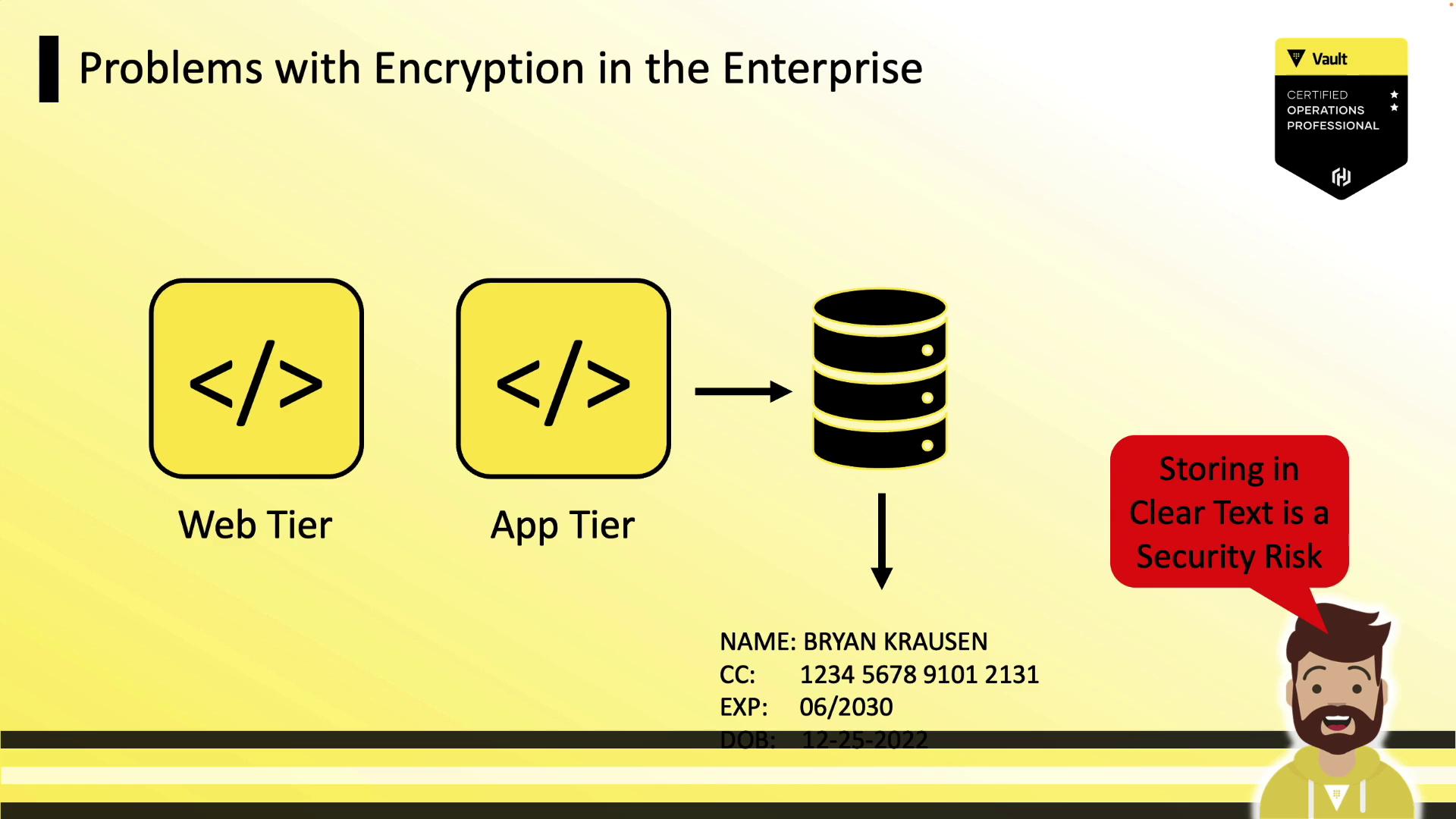
Encryption Options for Data at Rest
To protect data at rest, teams typically choose between:
- Database-native encryption
- Application-level encryption using external SDKs or APIs
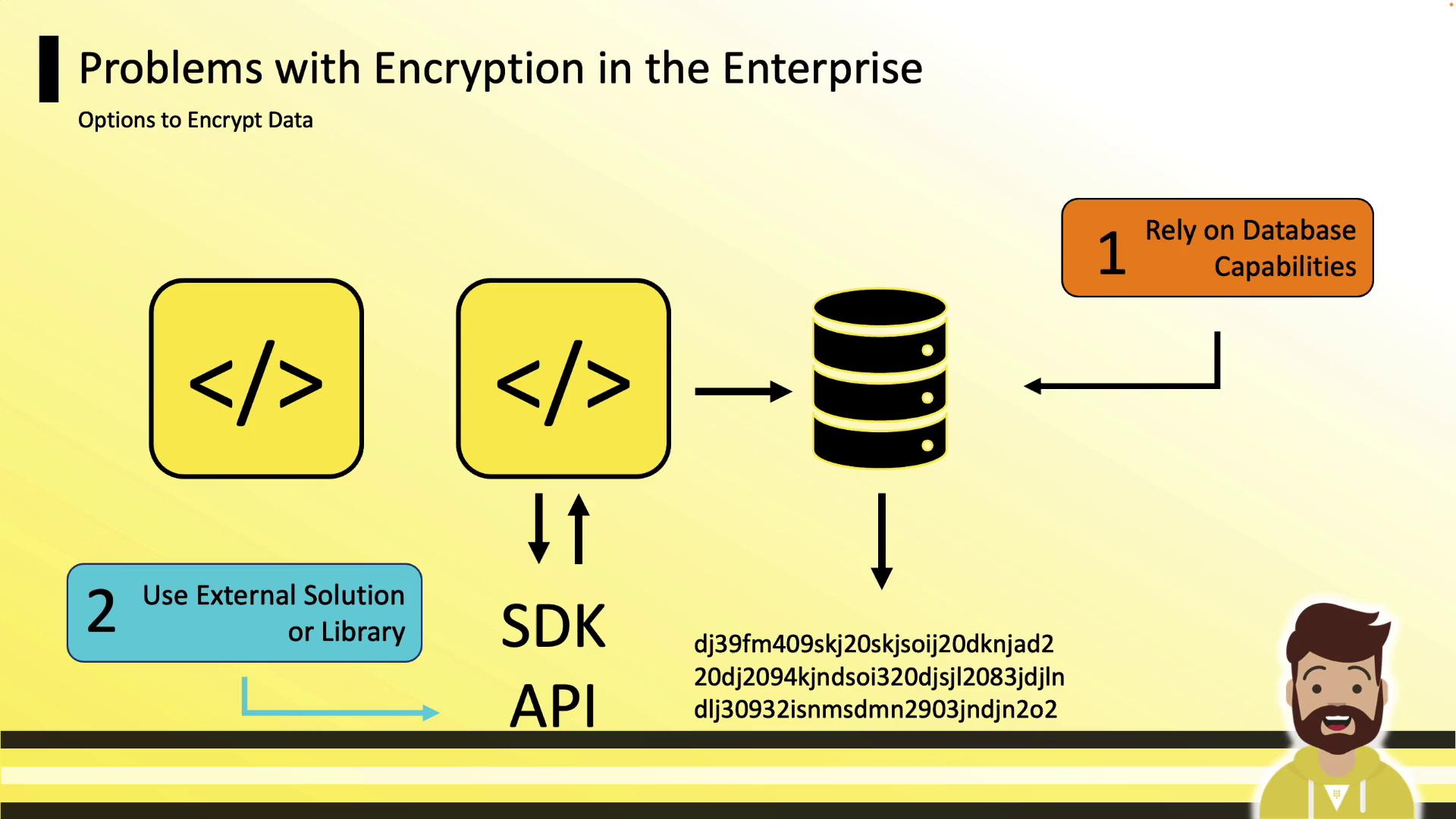
Drawbacks of Database-Native Encryption
Relying on built-in database features can lock you into a specific platform. For example, you might choose Cassandra for scale but switch to MSSQL solely for encryption support.
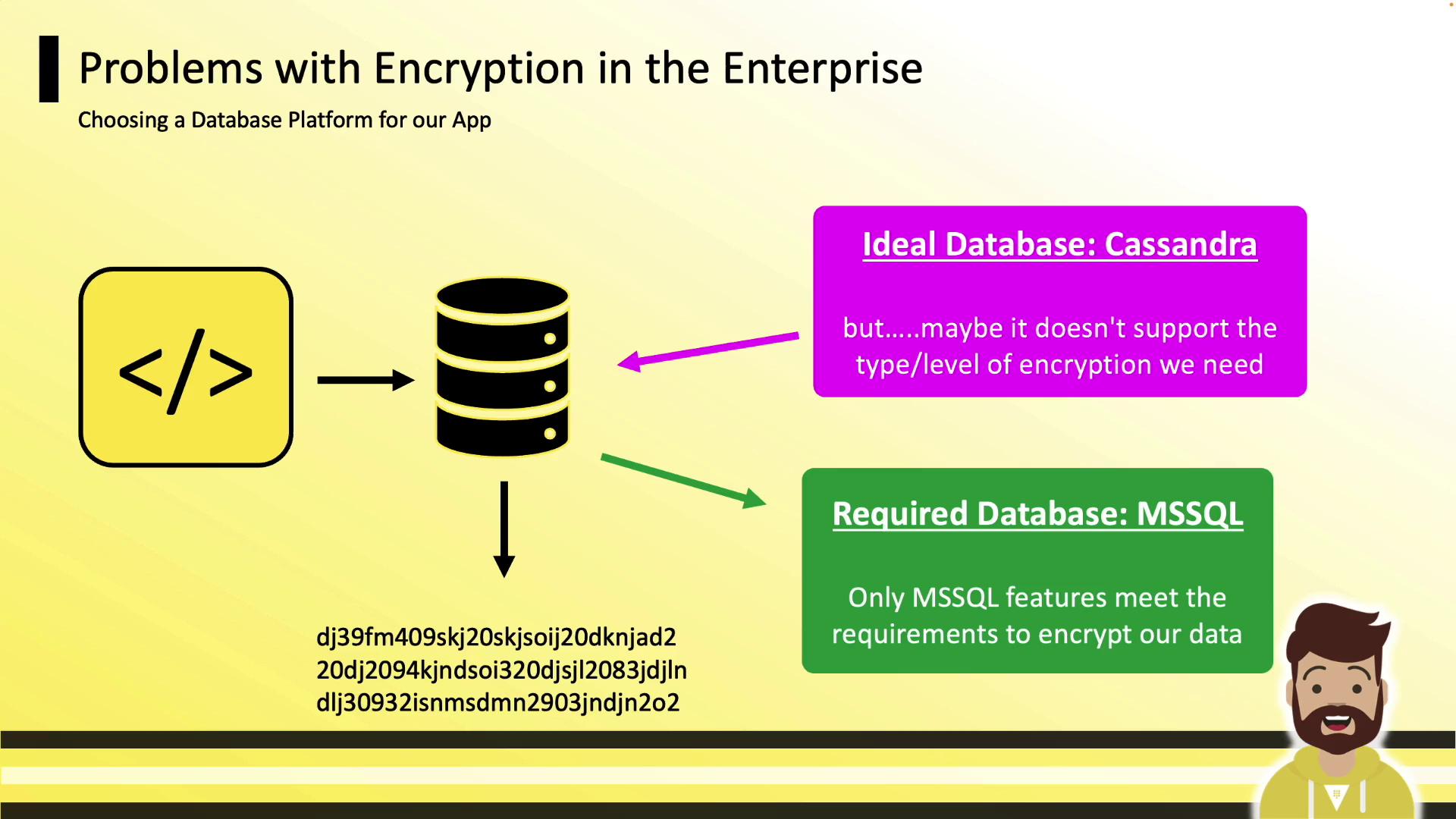
Siloed Developer Encryption
When each team implements its own solution, you end up with:
- Team A: OpenSSL
- Team B: Go libraries
- Team C: .NET APIs
- Team D: In-house tool
- Team E: Third-party service
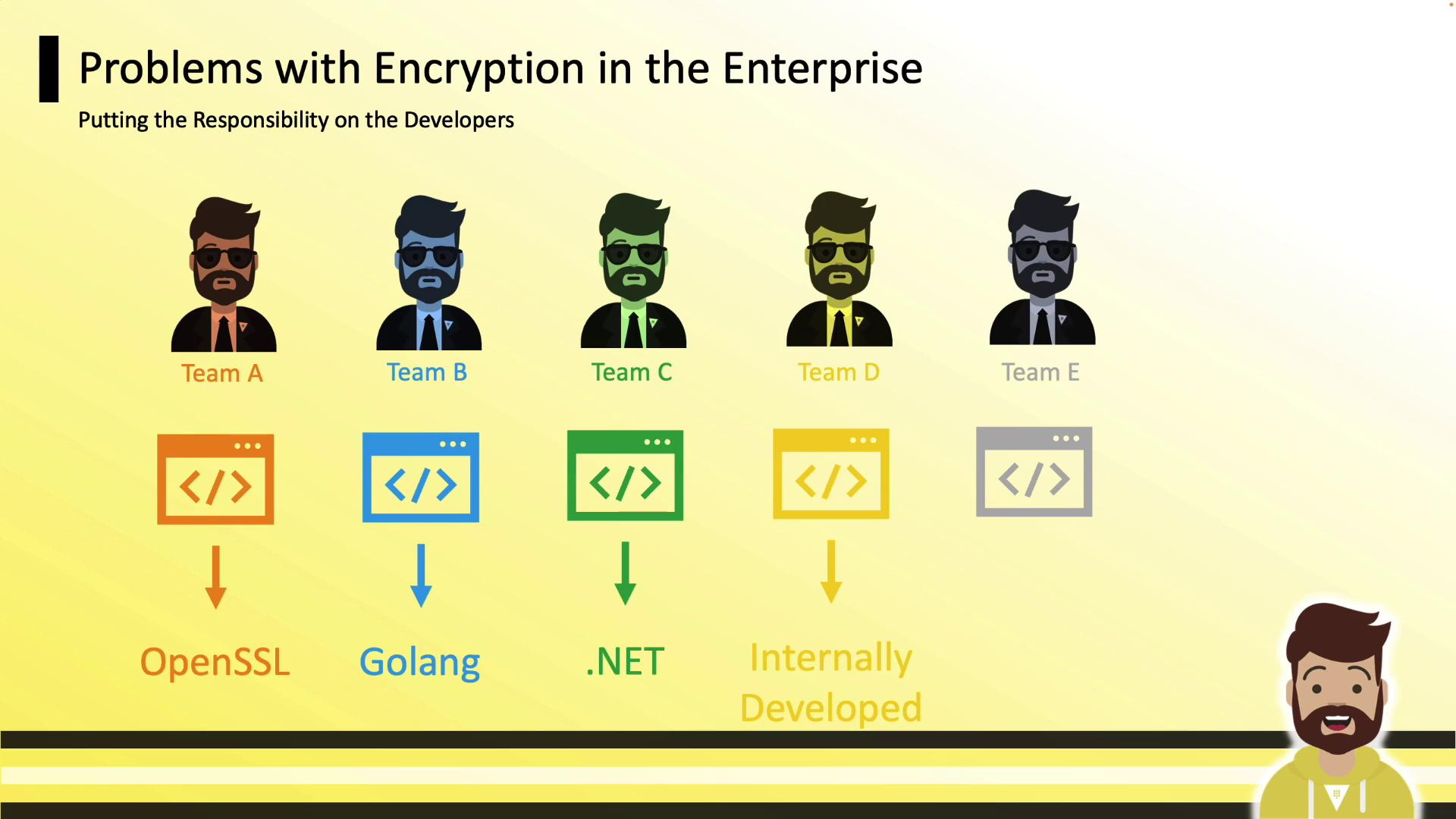
Note
Security teams specialize in cryptography. Let Vault handle keys and operations so developers focus on code.
Introducing the Transit Secrets Engine
Vault’s Transit Secrets Engine offers a unified encryption service:
- Applications send plaintext data to Vault over TLS
- Vault encrypts with a centrally managed key
- Vault returns ciphertext
- Applications store ciphertext anywhere (DB, object store, etc.)
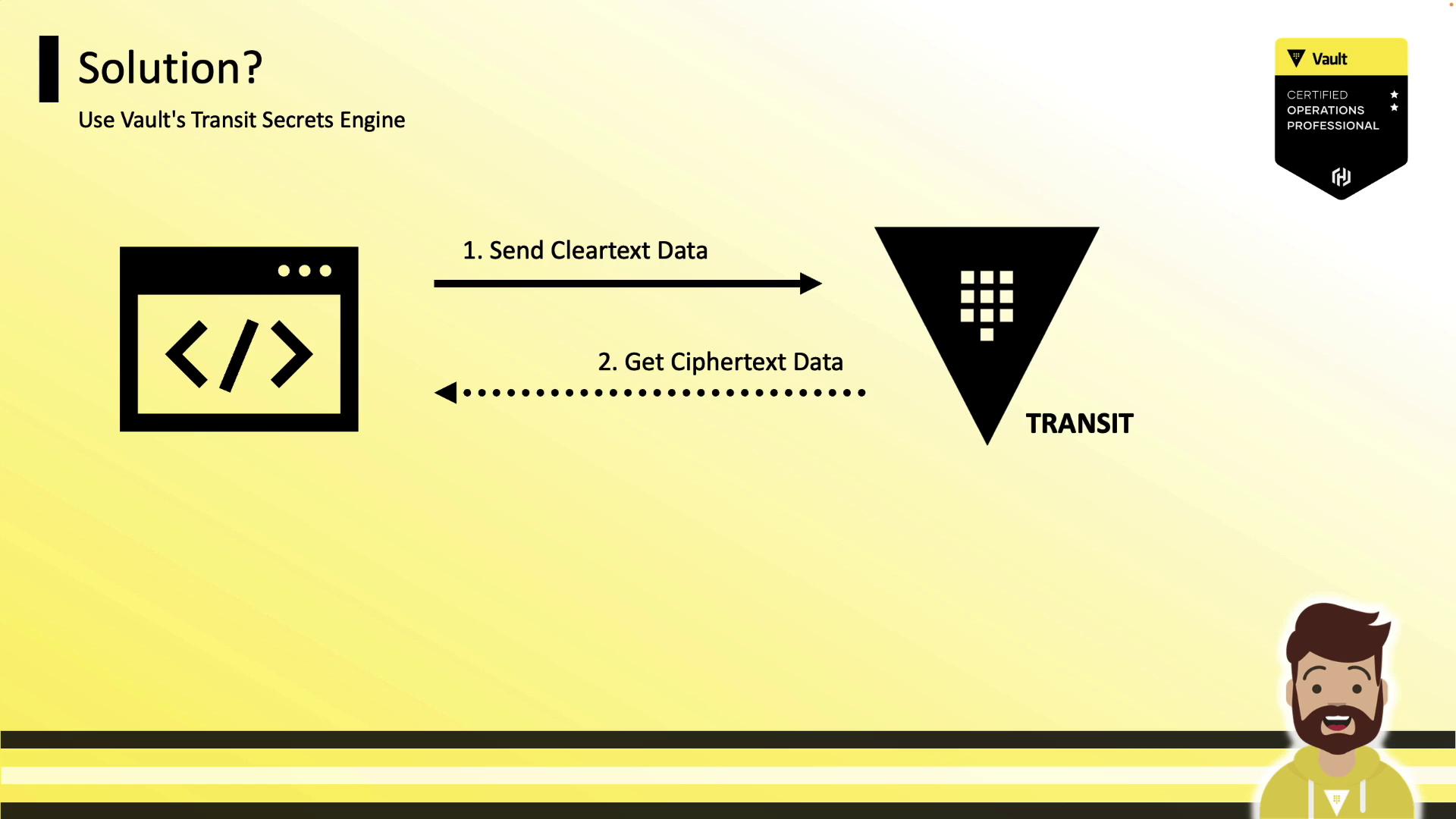
Applications never handle encryption keys directly. This decouples storage from encryption, harmonizes security across teams, and supports multiple applications against a single Vault cluster.
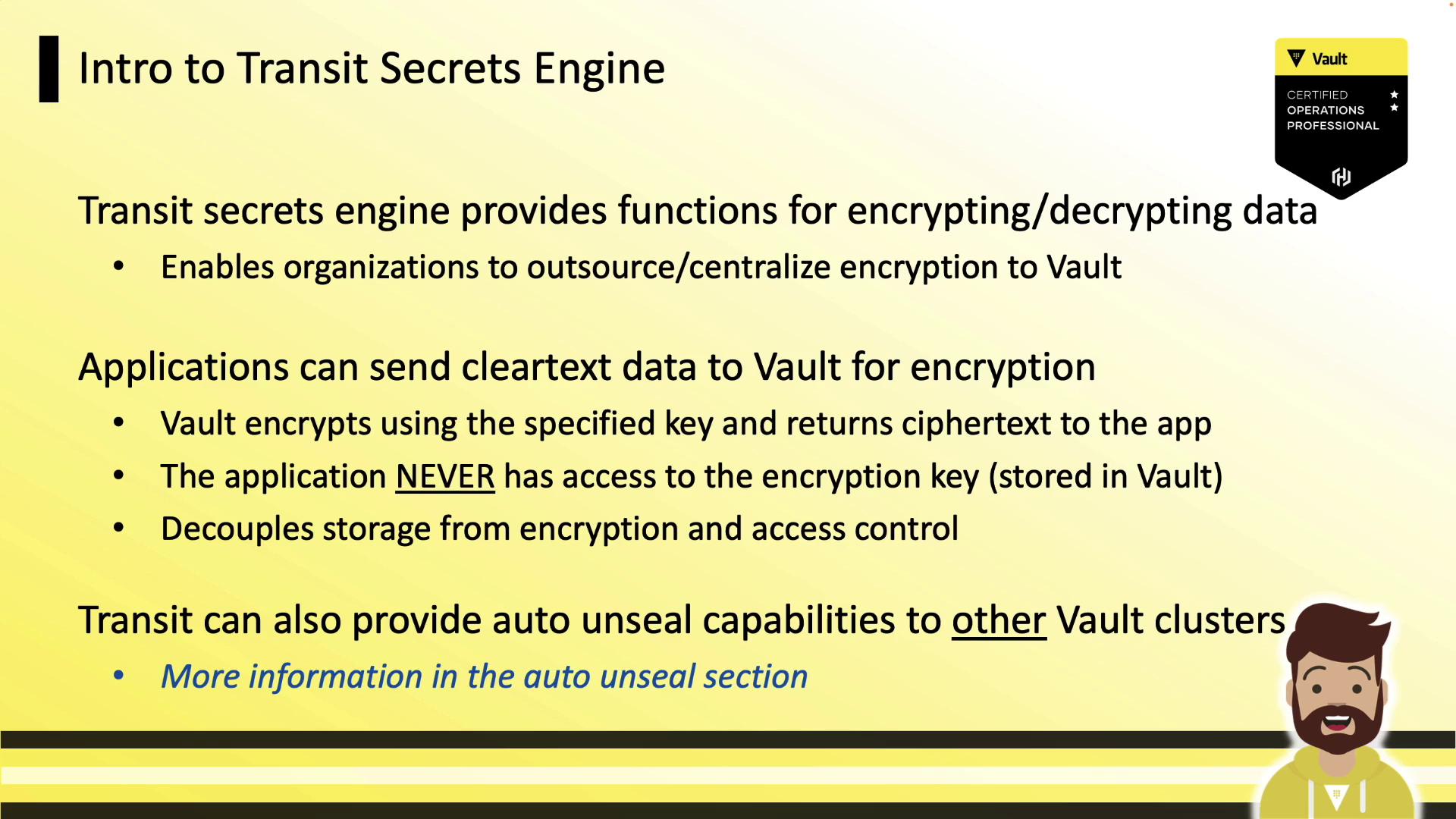
Key Features
- Encrypt/decrypt over HTTP API
- Centralized key management inside Vault
- Auto-unseal support with Cloud KMS integrations
- Stateless engine—Transit doesn’t store data
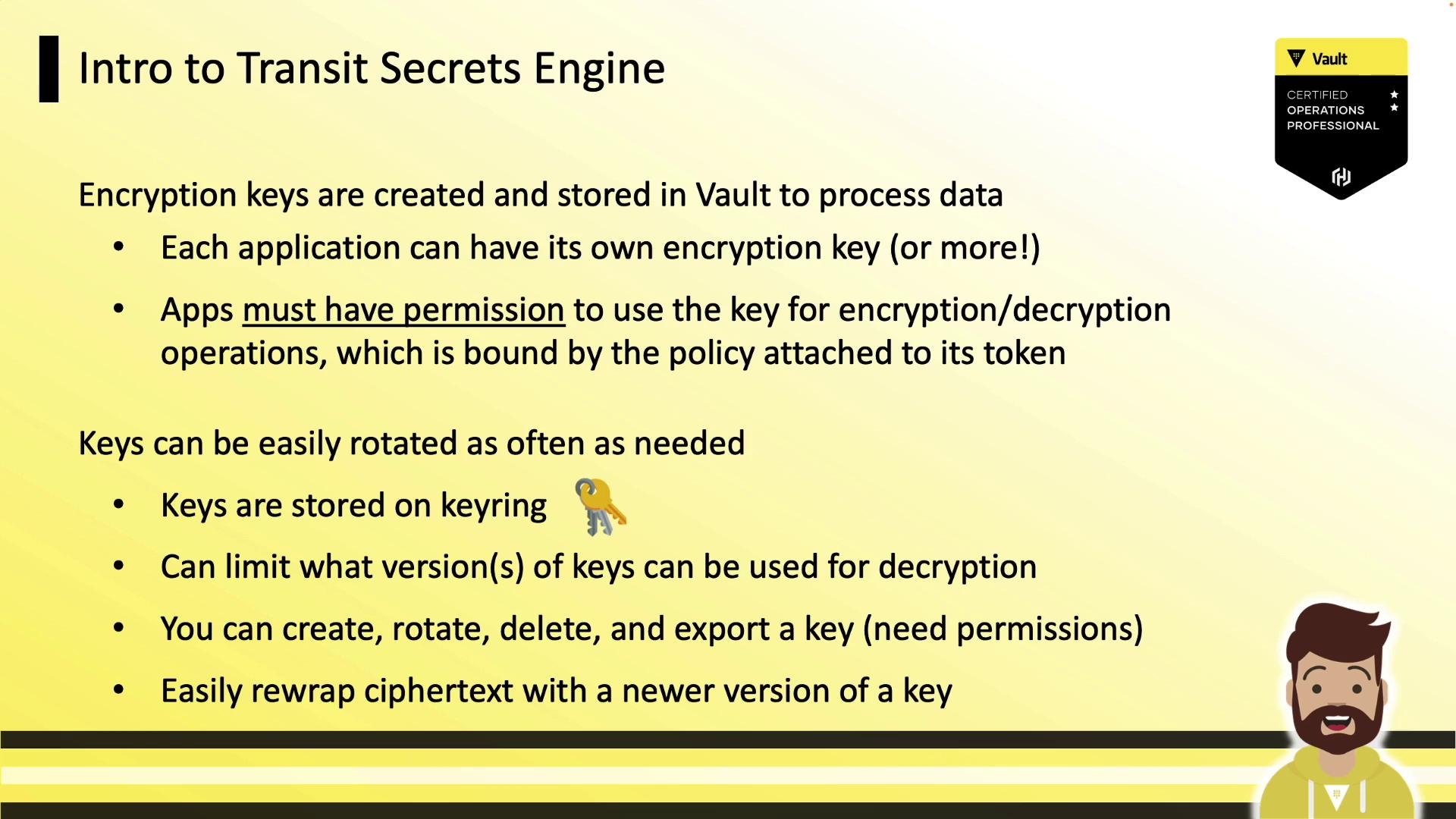
Each application can have dedicated keys and fine-grained policies (encrypt-only, decrypt-only, or both).
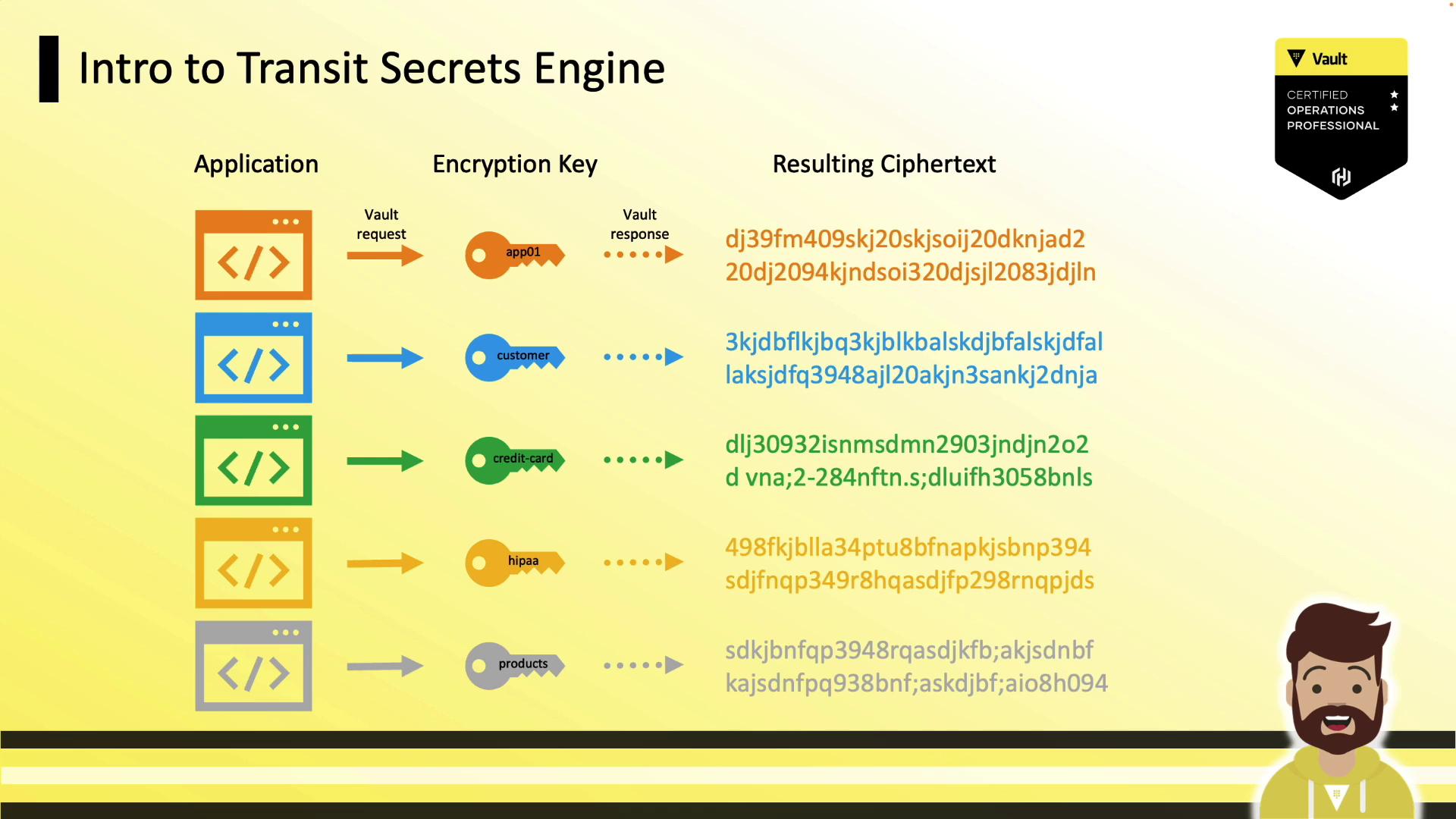
Supported Key Types
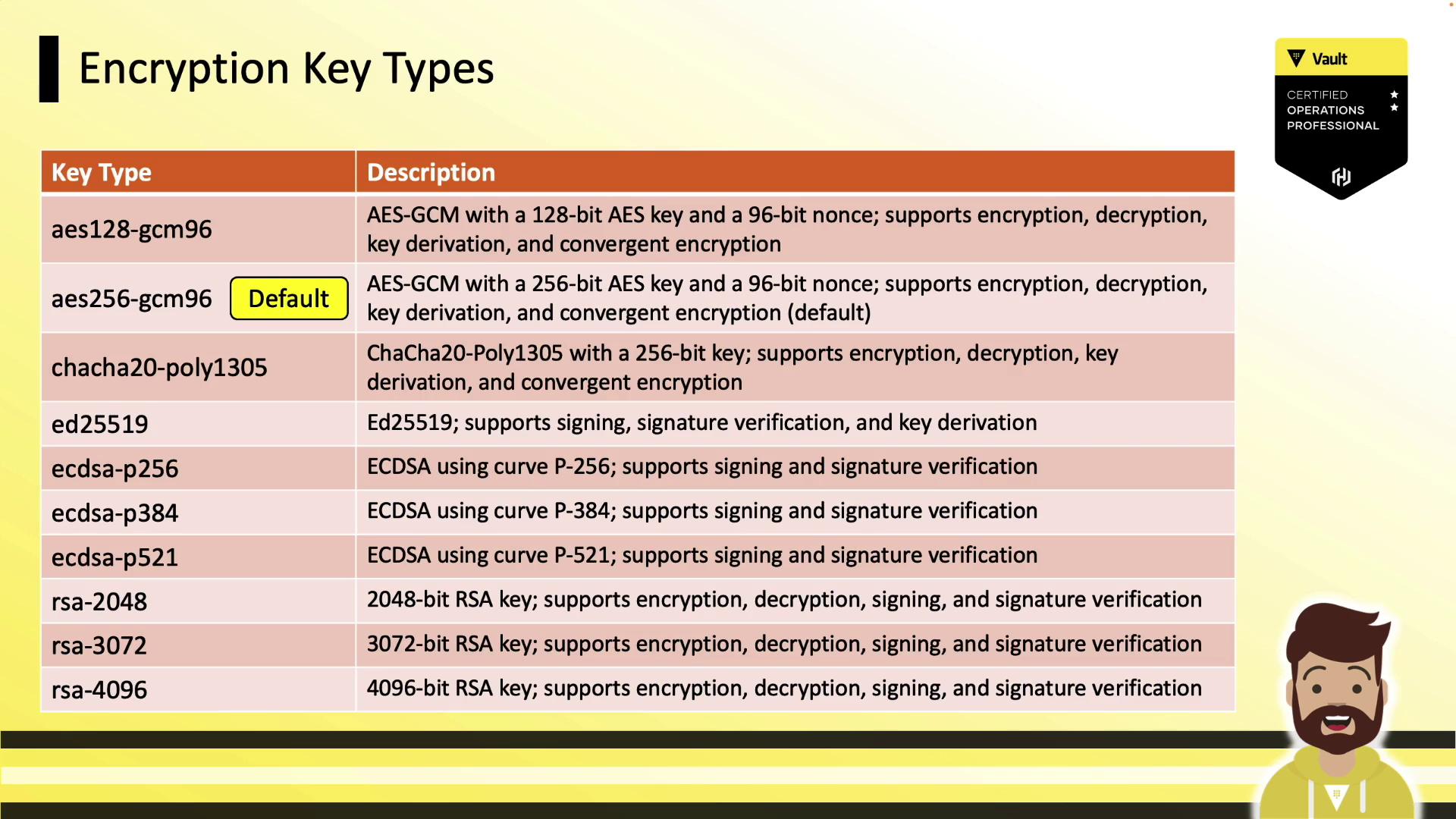
Below is a summary of common Transit key types:
| Key Type | Use Case | Notes |
|---|---|---|
| aes256-gcm96 | Symmetric encryption | Default |
| chacha20-poly1305 | Symmetric encryption | High performance |
| ed25519 | Signing & verification | Modern elliptic |
| rsa-2048 | Signing & verification | Asymmetric |
Vault also supports convergent encryption, where identical plaintexts always produce the same ciphertext, enabling efficient searches over encrypted data.
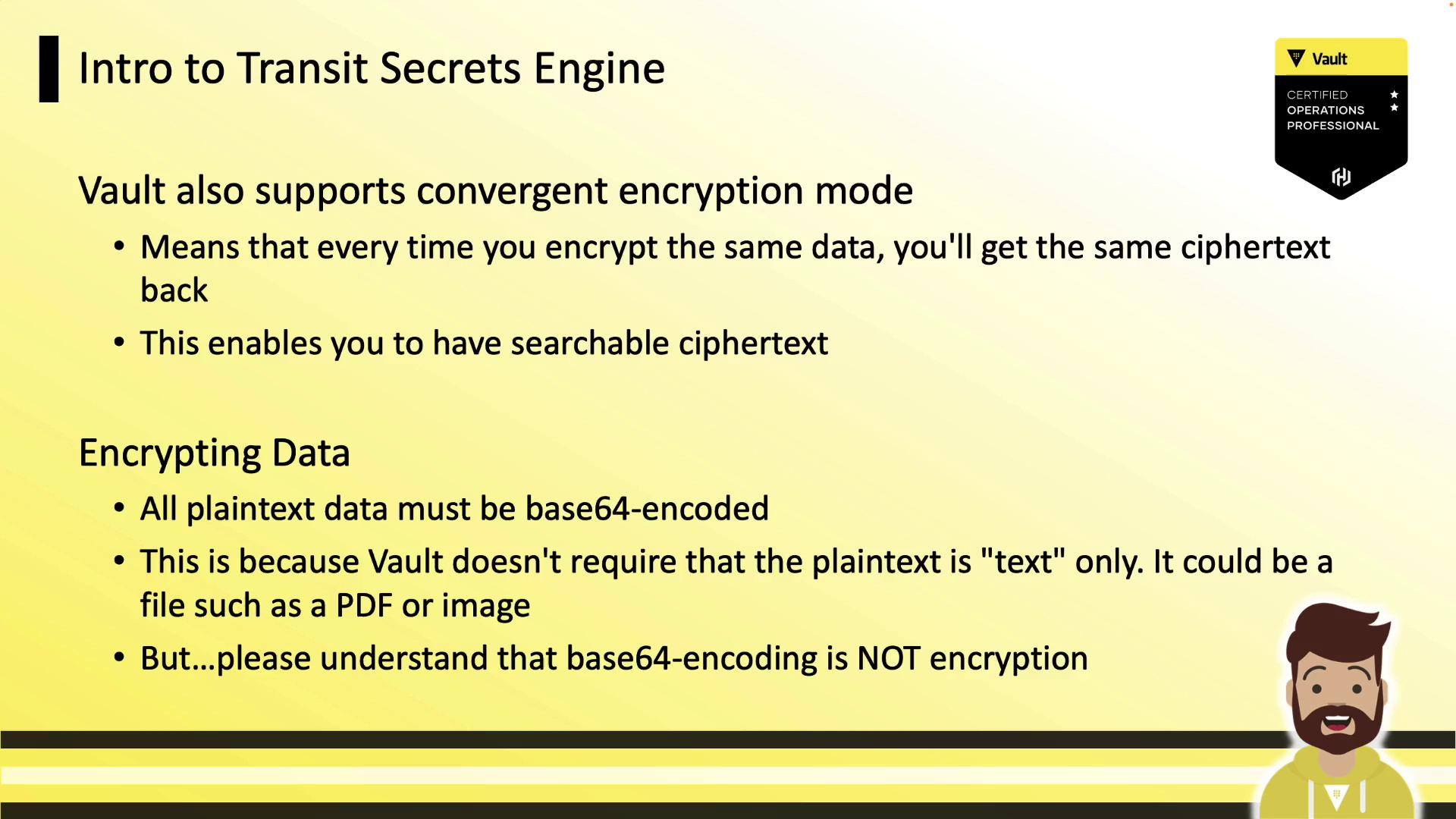
Note
All plaintext must be Base64-encoded before sending to Transit (this is encoding, not encryption).
Hands-On: Enable, Create Key, Encrypt & Decrypt
Enable the Transit engine:
vault secrets enable transit
# Success! Enabled the transit secrets engine at: transit/
Create an encryption key named training:
vault write -f transit/keys/training
# Success! Data written to: transit/keys/training
Encrypt Base64-encoded data:
vault write transit/encrypt/training \
plaintext=$(base64 <<< "Getting Started with HashiCorp Vault")
# Key Value
# --- -----
# ciphertext vault:v1:FYpph6C7r5MUILIiEiFhCoJBxelQbsGe...
# key_version 1
Decrypt ciphertext:
vault write transit/decrypt/training \
ciphertext="vault:v1:FYpph6C7r5MUILIiEiFhCoJBxelQbsGe..."
# Key Value
# --- -----
# plaintext R2V0dGluZyBTdGFydGVkIHdpdGggSGFzaGlDb3JwIFZhdWx0Cg==
Rotating & Configuring Keys
Rotate a key (manual or via auto_rotate_period):
vault write -f transit/keys/training/rotate
# Success! Data written to: transit/keys/training/rotate
Inspect key metadata:
vault read transit/keys/training
# Key Value
# --- -----
# keys map[1:1647960245 2:1647960257 3:1647961177]
# latest_version 3
# min_decryption_version 1
# ...
Set the minimum decryptable version:
vault write transit/keys/training/config \
min_decryption_version=4
# Success! Data written to: transit/keys/training/config
Applications using ciphertext from versions below this threshold will be refused decryption.
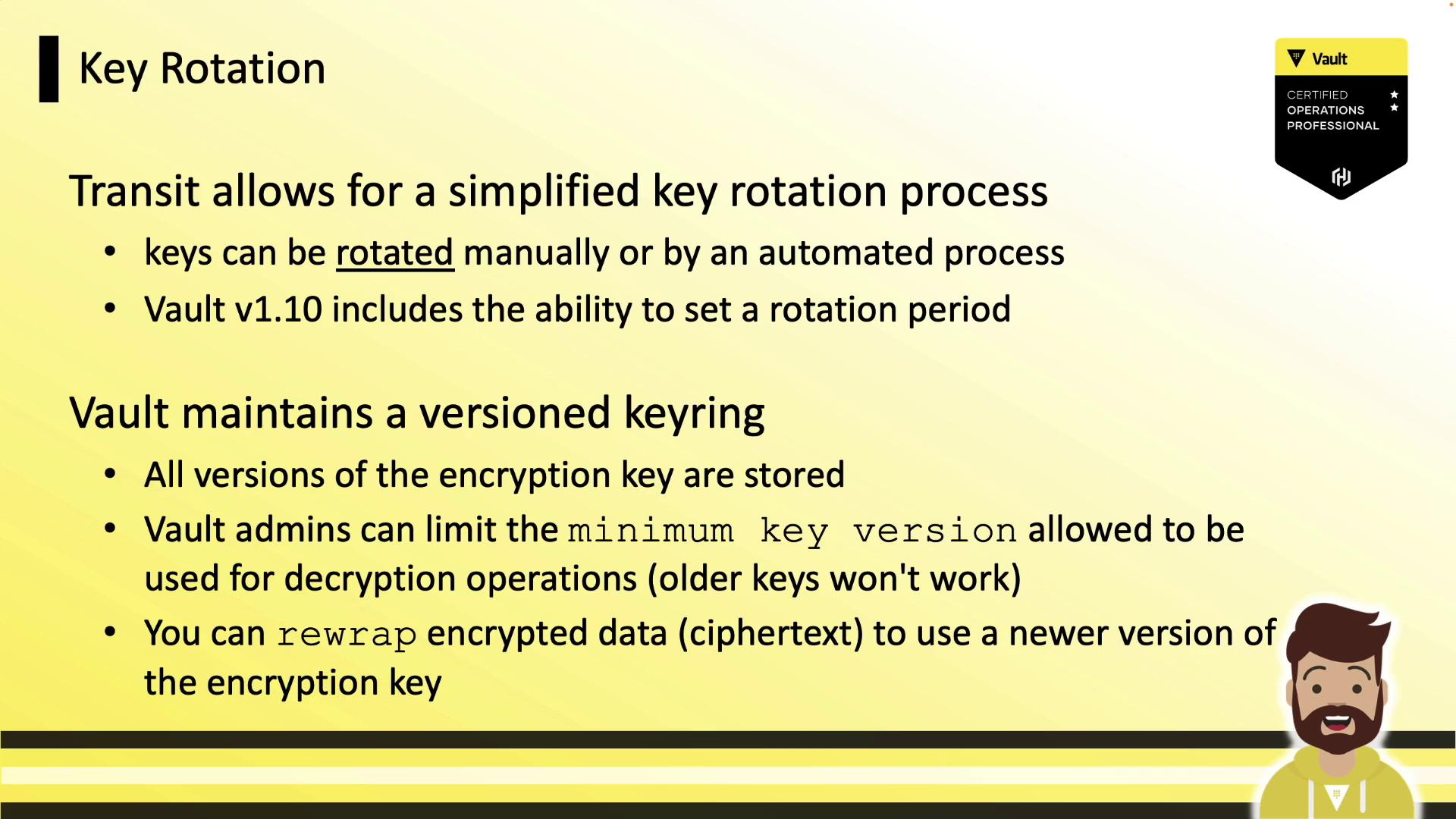
Rewrapping Ciphertexts
To upgrade existing ciphertext to the latest key version—without exposing plaintext—use rewrap:
vault write transit/rewrap/training \
ciphertext="vault:v1:FYpph6C7r5MUILIiEiFhCoJBxelQbsGe..."
# Key Value
# --- -----
# ciphertext vault:v4:RPzp1kMpjtUIis+6qxrNjIE...
# key_version 4
Rewrap operations keep data protected entirely within Vault.
Policy Example
Grant an application the ability to encrypt and decrypt using training:
# Encrypt capability
path "transit/encrypt/training" {
capabilities = ["update"]
}
# Decrypt capability
path "transit/decrypt/training" {
capabilities = ["update"]
}
Links and References
- HashiCorp Vault Transit Secrets Engine
- Vault HTTP API
- Vault Tokens and Policies
- HashiCorp Certified: Vault Associate
Watch Video
Watch video content